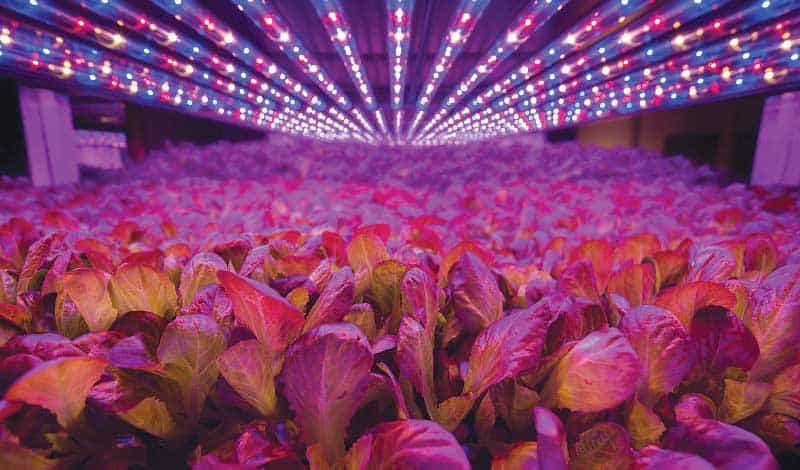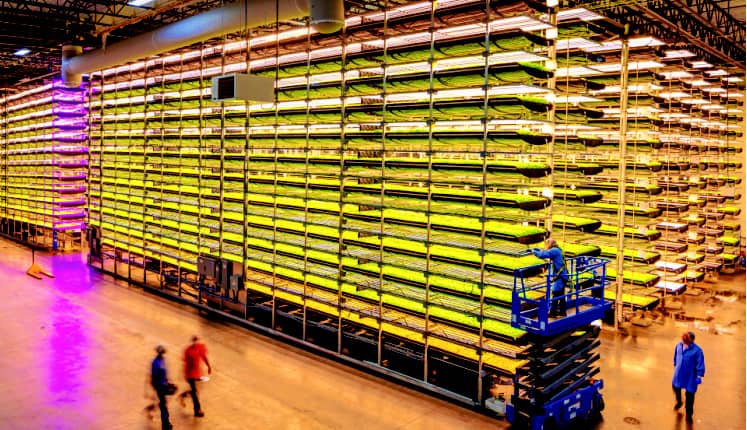The future of farming may not be neat rows of crops stretching out toward the horizon, but trays of plants stacked high to the ceilings of cavernous warehouses.
And the future may not need any soil, either!

Vertical farming, as it’s known, is a take on the greenhouse, where plants are grown indoors under carefully controlled conditions year-round. There are no pests (and hence no need for pesticides). Specially selected arrays of the light spectrum sub for the sun, and nutrients are delivered with water, eliminating the need for dirt.
At such a “smart farm,” growing conditions can be monitored in real time, and adjustments made as needed. The rate of growth also can be quickened, producing a crop in a third to half the usual time.
The results so far: neat little packages of greens found today in Capital Region supermarkets under names like BrightFarms and Little Leaf Farms – grown within a short drive of here to ensure freshness.
Although vertical farms currently fill just a fraction of the market and focus on fairly easy-to-grow leafy greens like arugula, kale and lettuce, projections show significant global growth this decade – with one estimate valuing output at $17.6 billion by 2028, up from $3.6 billion this year.
In a webinar hosted last week by The Food Institute, Marc Oshima, co-founder and chief marketing officer of AeroFarms, talked of the “holistic approach” his New Jersey-based company took in bringing together plant science, engineering, environmental sustainability and genetics to become a leader in vertical farming.
The company, with past investments from entities as diverse as Ikea and the sheikh of Dubai, earlier this year announced a plan to go public through a merger with an already publicly traded special purpose acquisition company that will provide additional money to accelerate growth.
AeroFarms operates commercial farms – the first was in Ithaca and the newest and largest will be built in 136,000 square feet (the size of a typical Target store) on the Virginia-North Carolina border to serve food retailers in the Mid-Atlantic region. It also has research and development farms for new products, and community farms that partner with schools and local
The company takes its name from aeroponics – growing plants in an air or mist environment without soil or other aggregate medium. AeroFarms mists plant roots “with just the right amount of water, just the right amount of nutrients” to get optimum growth, Oshima says.
As a result, a full crop cycle can be completed in 12 to 14 days, yielding up to 26 harvests a year. The process also saves land and water resources.
“Plants don’t need sunlight, they don’t need dirt,” he says. “What they need is a spectrum of light,” and AeroFarms uses “very targeted” LED lighting depending on the plant and flavor goal, to produce, as it boasts, sweeter kale and “perfectly peppery” arugula.
Marlene Kennedy is a freelance columnist. Opinions expressed in her column are her own and not necessarily those of Agritech Future. Reach her at marlenejkennedy@gmail.com.



